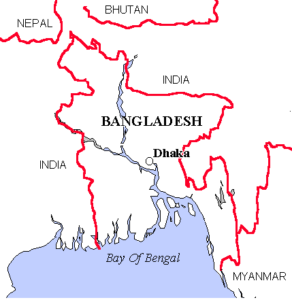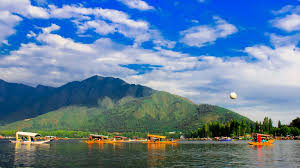I’ve had my eye on India ever since I found out that calories per capita had dropped in India over the last 30 years.
That’s not what happens when things are going well, unless a huge number of people have moved to sedentary jobs, which they had not.
Neoliberalism is about production and supply trains. They’re very complicated, and the parts for a finished good may be made in a dozen countries and shipped to a plant which does the final assembly. The IP holder often skims ten to 30 percent profit off of this.
Most countries currently industrialized didn not industrialize under neoliberalism. They ran protectionist trade policies and exported their way to mature economies. That was generally allowed because they were a military ally or satrapy. Japan was first Britain’s ally, then for the US. Taiwan and South Korea were American satrapies, etc.
China used a hybrid model. They got themselves into the supply chains by offering high profits to Westerners, generally through simple wage arbitrage (“our workers cost less”). They put heavy pressure on people who took those profits to give them their technological secrets (IP) in exchange. And for much of the early period, they also ran a protectionist policy, keeping their currency low against the US dollar. They turned neoliberalization into mercantalism, and because less than five countries have EVER industrialized under any system but mercantalism, they succeeded.
They were able to do this because they made it very worth the while for greedy Western elites to ship jobs to them; they made a lot of Western elites rich. They knew exactly the deal they were offering.
India was socialist for a long time. They felt it didn’t work, so they decided to try neoliberalism.
But, they ran into the fact that it made more sense to offshore to China, and they didn’t do neoliberalism smart — they didn’t control their currency properly or find another way to turn neoliberalism into mercantalism. China kept large parts of their economy state-controlled, and used those companies actively. Yes, state-controlled companies were less efficient, but they gave the State power, and they provided ways of spreading welfare to people that the private companies weren’t taking care of. Not immiserating too many people meant making sure that Chinese citizens saw the new industrial and trade policies as good for them.
India, on the other hand, got in mostly on service jobs. “We speak English, so we can do service center stuff,” and a fair bit of IT outsourcing and offshoring.
But they neoliberalized as if they were already a first world nation; they sold off public enterprise and gutted state control over the economy as if there were a huge surplus created by decades of good growth which could be cannibalized to create a rich class.
India did create a small new middle class and rich, yes, but they did so without creating widespread prosperity.
Because of the way human psychology works (we have a strategy, it has not worked, we must do it harder because we are always right until we are overthrown), when the old elites couldn’t really make this work, a toxic mix of neoliberalism and Hindu Nativism took control of the country, with the face of Modi.
Modi’s a right-wing nationalist, verging-on-fascist (some would take out the word “verging”). But he’s also a neoliberal’s neoliberal. Practically, his first act was to de-monitize: removing large bills from circulation and forcing poor people to use electronic money. This was sold as crushing corruption, but what it did was make sure that the government and financial elites could grab more money from more transactions, while crushing the informal economy most Indians live in.
Recently, he’s passed a law which allows farms to be bought more easily. And so they will be (farmers, not being idiots, have opposed this law).
So Modi’s run the same play you can see in right-wing parties around the world: He’s offered nativism and feel-good, right-wing identity politics (Hindus are the best, Muslims are scum, get rid of them, no Hindu girl should marry a Muslim, etc.), and then run policies which will, over time, hurt the poor and create more rich.
But these general policies were running long before Modi.
One of those policies that has now been brought to light by Covid is that the public health care sector was gutted under neoliberal governments, so that private healthcare could make more money. So now, when it’s needed, there isn’t enough public (or private) care around.
This is how neoliberalism works: It looks for a public good and then it gets rid of it. This can be a regulation which, if removed, allows profit (making it hard to buy farms means they can’t be bought up and turned into large cash farms; cutting pollution rules means someone makes more money, etc.) or it can be by making public services shitty, or selling them off to the private sector, or other variations.
Again, in a developed country with a large prosperity cushion like the US, France, or Canada, you can do this for a while, and it doesn’t look so bad.
If, on the other hand, you do this to a country which had never hit developed status in the first place, well, people eat less calories, and when a pandemic happens, hospitals turns away patients in droves.
Neoliberalism doesn’t work when trying develop or industrialize countries, unless you game it so it turns into protectionist trade. China did that, India didn’t, and Indians are now paying the price.
Neoliberalism is designed to create rich elites while crushing ordinary people. In India’s case, it also created a small middle class (because that’s rich, really, in India, as anyone who’s spent much time there knows. Middle class means you have servants, for example. It’s not middle class like in The US or Europe.)
Neoliberalism is not designed to help anyone but the rich, except temporarily. Some asset holders will win (say, if you owned a house in 1980 in the US and didn’t sell until retirement, then moved somewhere cheap.)
But no other groups win for any length of time, because neoliberalism is the policy of looting, of pumping asset prices and of crushing wages. That’s the policy regime. It does what it’s meant to: It creates a rich class and, for a while, it keeps enough people supporting it who won’t win the end (unless they die soon enough) by giving them large, unearned asset price increases that are much greater than inflation.
India needs a new strategy. The overwhelming of its medical infrastructure is exactly the result of the neoliberal policies it has followed for decades. Modi is only the latest and worst, not the first.
I wish the Indians well. They have a very challenging few decades ahead of them, perhaps the most challenging of any non-African large country in the world. I hope they get their act together, ASAP, or a lot more Indians than Covid is killing will die, and die ugly, as climate change, ecological collapse, and water shortages hit.
(The more people subscribe or donate the more I write and the happier I am. So please consider doing so if you like my writing.)

 But I want to focus on the longer game: Where does this leads?
But I want to focus on the longer game: Where does this leads?